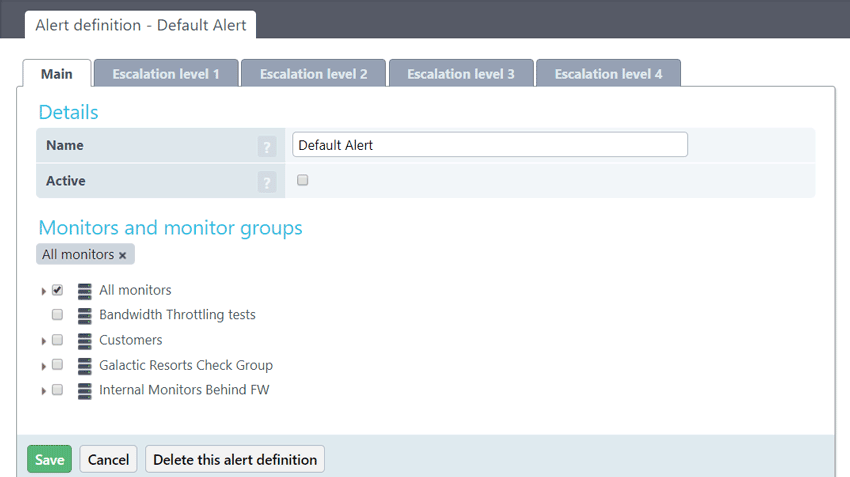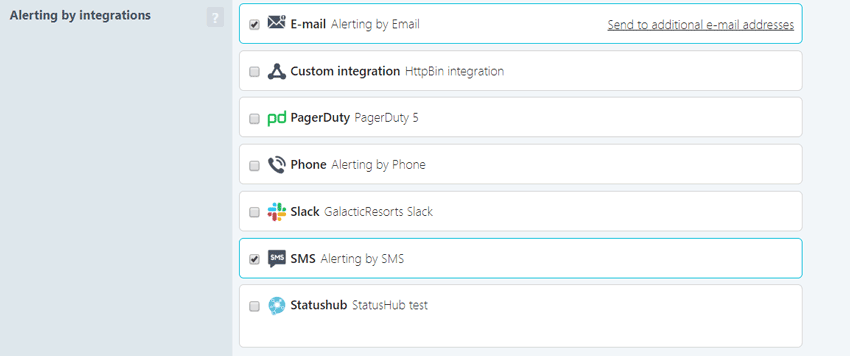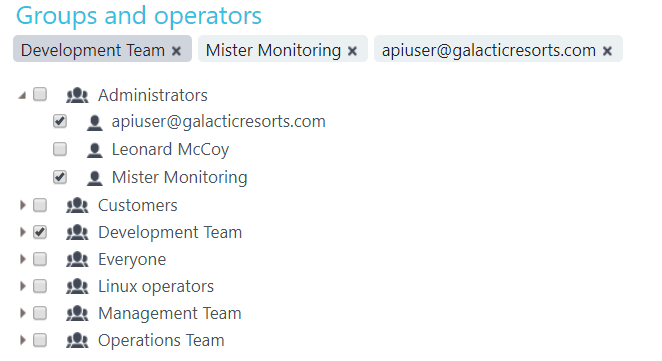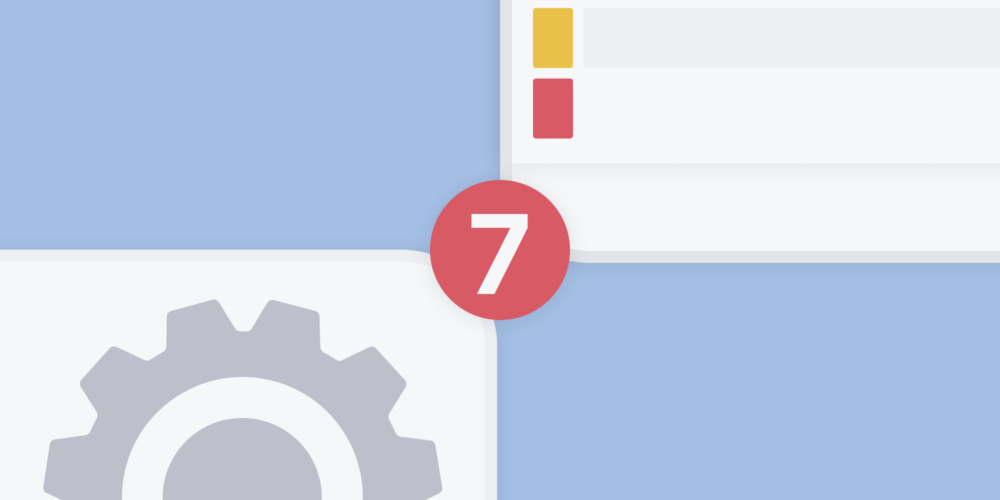Alerting is central to your website, web application, and API monitoring. Getting the right message to the right people is essential to quickly resolving outages and error states. In this article, we walk you through seven aspects you need to consider when setting up the alerting for your monitors.
If you need a general overview of how alerting works within Uptrends, we have a Knowledge Base article and an Academy course you may want to visit.
1. Start with the basics: the default alert definition
Every Uptrends account starts with one alert definition, the default. When your monitor encounters an error, Uptrends uses alert definitions to send alerts. When you set up your account, you automatically get one alert definition. Unless you modify the definition, the default definition includes all your monitors and sends alerts to the email addresses and mobile phones for every operator in the account. Up to three reminders also go out in 15-minute intervals if the error condition persists.

You can customize the default by enabling further escalations, and depending on your account type, you can add additional alert integrations. If you’re only using the default definition, all your monitors follow the same protocol when your monitors error. For basic availability monitoring, it is all you need, but for more advanced monitoring, you’ll want to expand to a more sophisticated alerting plan.
2. Use custom alert definitions to your advantage
If you have an Enterprise, Business, or Professional monitoring plan with Uptrends, you can have multiple alert definitions. Multiple alert definitions allow you to handle alerts differently for your various monitors and monitor types. For example, API failures probably need a response from different resources than a web performance monitor, so an alert definition specific to APIs allows you to target the right team.
You may want to set up different alert definitions based on a few different factors:
- Urgency: There are errors you want to know about immediately and those that can wait. For example, if your availability monitor indicates that you have an outage, you want to know about it quickly. However, your web performance monitor may show that your response times are slipping in one of your regions, but a reduced response time doesn’t carry quite the same urgency as failing web applications or full outages. Sure, you want to rectify the performance problems ASAP, but you can probably address the problem during regular work hours. By setting up separate alert definitions, you can prioritize alerting and the corresponding notifications. For example, you may only want non-urgent alerts going to email or logged by your incident tracking and handling system, but your team doesn’t need to rush to find a solution.
- Monitor type: In the example above, we use a performance problem versus an outage with the outage being more urgent. Outages may outweigh performance concerns in some cases. Chances are, your availability, performance, transaction, and API monitors all carry various levels of urgency, and most need different specialties for troubleshooting and remediation. Using different alert definitions for your monitors allows you to notify the correct parties as issues escalate.
3. Use escalations to bring the right resources to the problem
Each active alert definition has, at a minimum, one level of escalation, and your escalation settings determine when Uptrends sends the alert. If you stick to the defaults, the escalation sends an alert after the first confirmed error followed by three reminders.
Depending on the monitor type and the level of urgency, you may only need a single escalation. However, by activating additional escalations (up to four levels), you can change the alert recipients and the notification methods. For example, you may not want to change who gets the notification, but maybe an after-hours email notification isn’t getting the job done, so in the next level of escalation, you may want to include SMS or voice messages to capture someone’s attention.
4. Choose the right notification channels
Every team communicates differently. And the channels used for communication vary from team to team. That’s why no cookie-cutter solution can fit every Uptrends user. Your options for alerting need to fit your team and their communication needs. Therefore, Uptrends has several options for getting the information out there. Remember, you aren’t locked into one channel, you can use multiple channels for a single alert definition.
Email: The most commonly used alerting method is through email notifications. You can send your alerts to your Uptrends operators based on their contact settings, and you can include additional non-Uptrends users by adding their emails directly into the alert definition.
SMS/Text: Use SMS/Text for your alert messages that have a higher level of urgency. Your alert goes directly to the mobile number included in your operator settings.
Phone/voice: Using your mobile number, Uptrends uses an automated call to inform you that your monitor has found a problem.
Push: You can get notifications through the Uptrends mobile app about errors. Uptrends has mobile apps for both Apple and Android smartphones.
Out-of-the-box integrations
Using the Integration option on the Alerting menu, you can add several integrations that we’ve already optimized for Uptrends. Out-of-the-box integrations include
Create your own integration
- Uptrends Integrations: You can connect any API that can process Uptrends’ alert message format. All you need is the API’s URL.
- Webhooks: Use Uptrends to connect to any API. Use predefined variables to build out your customized message.

5. Send alerts to the right people
You can specify in your alert definition who receives alert notifications in two ways: specify operators by name or include emails for non-Uptrends users. You can use the alert definition to cherry-pick your operators receiving the alert rather than sending the alerts to all operators. You can also include other people that don’t have a user account in Uptrends. Remember, these other people you notify do not have access to the logs or check details, so make sure the messaging is clear to what the problem might be using the message box on the escalation tab.

6. Send alerts to groups
Your Uptrends account has two default user groups: administrators and everyone. You can define additional groups using Operator Groups under the Account menu. Build groups based on shift schedules, area of expertise, team, department, or any other grouping that makes sense for your company’s structure (remember you can assign operators to multiple groups). Once you’ve got your groups defined, you can use those groups in your escalations for notification purposes. For example, you may want site outages going to your operations team, but after a prolonged outage, you may want to include your development team in the second escalation. If the error continues, you may want to involve management in the third or fourth escalation.
7. Use duty schedules
Our last suggestion for you is to set up and use duty schedules. If you’re operating a 24-hour shop or have an on-call schedule, you can set up each operator with a duty schedule. If an alert condition arises, Uptrends only sends alerts to operators currently on-duty. Only those members required to respond get notifications about an error condition.
Mix it up
You have lots of ways to get notifications out to your team. You may want to use Uptrends to notify individuals through SMS or email but then use an integration for tracking purposes. Uptrends’ users find creative ways to use the alerting tools in Uptrends all the time, and we love to hear about them. We are always looking for innovative solutions, so send your ideas our way. If we can help you to meet your alerting goals, let us know. Learn more about our feature request policy.




